A cable-stayed bridge has one or more towers (or pylons), from which cables support the bridge deck. Its distinctive features are the cables or stays, which run directly from the tower to the deck, normally forming a fan-like pattern or a series of parallel lines. This is in contrast to the modern suspension bridge, where the cables supporting the deck are suspended vertically from the main cable, anchored at both ends of the bridge and running between the towers. The cable-stayed bridge is optimal for spans longer than cantilever bridges and shorter than suspension bridges.
Cable-stayed bridges are extremely elegant and very effective structures and they are also architectural landmarks. The combination of multiple simple systems allows for a structure where the role of each of its components is well defined. When a cable-stayed bridge is chosen, the initial design phase is of utmost importance. The characteristics of the structure and whether it is mainly constrained by structural or architectural reasons must be defined at an early stage in the design process.
Advantages of Cable-stayed bridge
Cable-stayed bridges are a popular choice as they offer all the advantages of a suspension bridge but at a lesser cost for spans of 500 to 2,800 feet (152 to 853 meters). They require less steel cable, are faster to build and incorporate more precast concrete sections.
- Cables stretch diagonally between these pillars or towers and the beam. These cables support the beam.
- A cable-stayed bridge, one of the most modern bridges, consists of a continuous strong beam (girder) with one or more pillars or towers inside the middle.
- The cables are anchored in the tower rather than at the end.
- Much greater stiffness than the suspension bridge, so that deformations of the deck under live roads are reduced
- Can be constructed by cantilevering out from the tower – the cables act both as temporary and permanent supports to the bridge deck.
- For a symmetrical bridge ( i.e. spans on either side of the tower are the same), the horizontal forces balance and large ground anchorages are not required.
Different types of Cable-stayed bridge
Side-spar cable-stayed bridge
A side-spar cable-stayed bridge uses a central tower supported only on one side. This design allows the construction of a curved bridge.
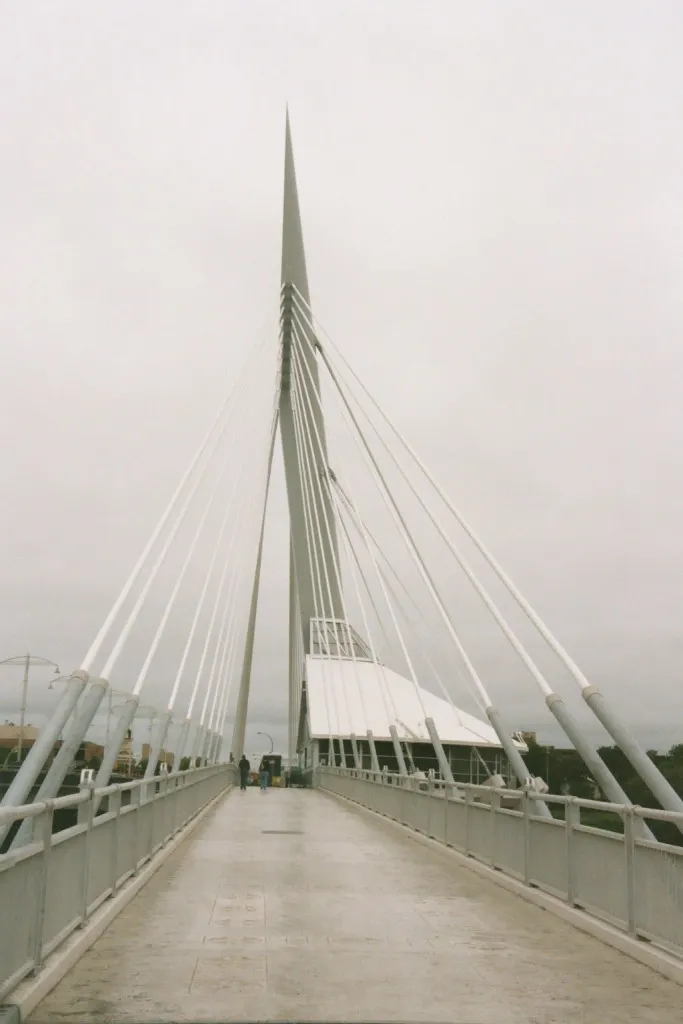
Cantilever spar cable-stayed bridge
Unlike other cable-stayed types, this bridge exerts a considerable overturning force upon its foundation and the spar must resist the bending caused by the cables, as the cable forces are not balanced by opposing cables. The spar of this particular bridge forms the gnomon of a large garden sundial.

Multiple-span cable-stayed bridge
Cable-stayed bridges with more than three spans involve significantly more challenging designs than do 2-span or 3-span structures. In a 2-span or 3-span cable-stayed bridge, the loads from the main spans are normally anchored back near the end abutments by stays in the end spans. For more spans, this is not the case and the bridge structure is less stiff overall. This can create difficulties in both the design of the deck and the pylons.

Extradosed bridge
The Twinkle-Kisogawa is an extradosed design, with long gaps between the cable supported sections. The extradosed bridge is cable-stayed but with a more substantial bridge deck that, being stiffer and stronger, allows the cables to be omitted close to the tower and for the towers to be lower in proportion to the span.
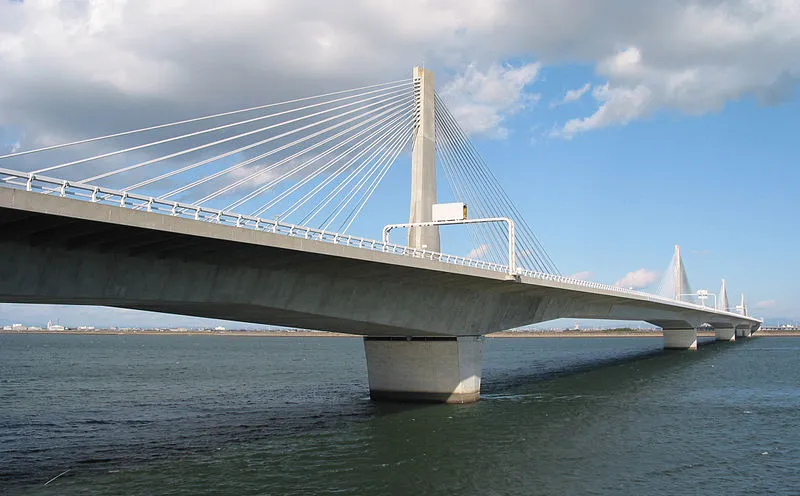
Cable-stayed cradle-system bridge
A cradle system carries the strands within the strays from the bridge deck to bridge deck, as a continuous element, eliminating anchorages in the pylons. Each epoxy-coated steel strand is carried inside the cradle in a one-inch (2.54 cm) steel tube. Each strand acts independently, allowing for removal, inspection, and replacement of individual strands.
Design of Cable-stayed bridge
The main structural elements of a cable stayed bridge are the bridge deck, piers, towers and the stays. The deck supports the loads and transfers them to the stays and to the piers through bending and compression. The stays transfer the forces to the towers, which transmit them by compression to the foundations, The suspension system is usually one of two main types, with the stays anchored to the top of the tower (Fan) or the anchors are distributed along the length of the tower (Semi-Fan and Harp). This system directly affects the level of axial load and the elastic support given to the deck and to the tower. The static system of a cable-stayed bridge can vary due to the conditions of support of the deck at the abutments and whether there are piers in the side spans. The connection between the deck and the tower is also of great importance. This system primarily affects how effectively the structure carries live loads. The longitudinal system is characterized by the ratio of the height of the towers to the central span, the relationship between the central span with the side spans, the connection of the deck to the approach viaduct, and the ratio of stiffness of the deck and the towers.
There are four major classes of rigging on cable-stayed bridges: mono, harp, fan, and star.
- The mono design uses a single cable from its towers and is one of the lesser-used examples of the class.
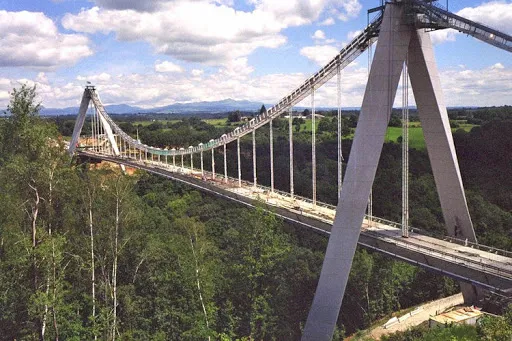
- In the harp or parallel design, the cables are nearly parallel so that the height of their attachment to the tower is proportional to the distance from the tower to their mounting on the deck.

- In the fan design, the cables all connect to or pass over the top of the towers. The fan design is structurally superior with a minimum moment applied to the towers, but, for practical reasons, the modified fan (also called the semi-fan) is preferred, especially where many cables are necessary. In the modified fan arrangement, the cables terminate near the top of the tower but are spaced from each other sufficiently to allow better termination, improved environmental protection, and good access to individual cables for maintenance.
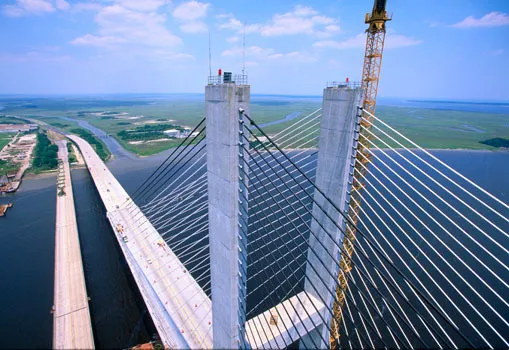
- In the star design, another relatively rare design, the cables are spaced apart on the tower, like the harp design, but connect to one point or several closely spaced points on the deck.
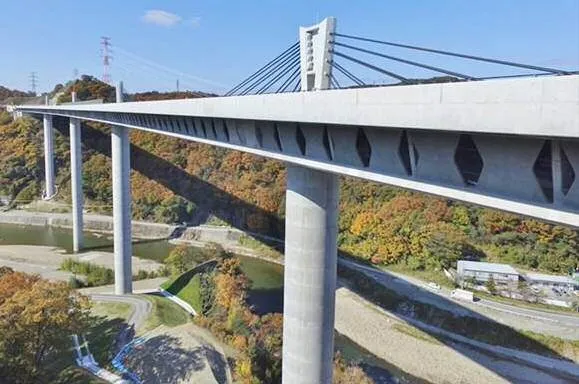
There are also four arrangements for support columns: single, double, portal and A-shaped.
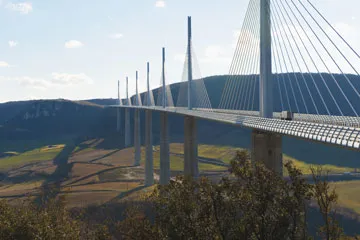
- The single arrangement uses a single column for cable support, normally projecting through the center of the deck, but in some cases located on one side or the other.
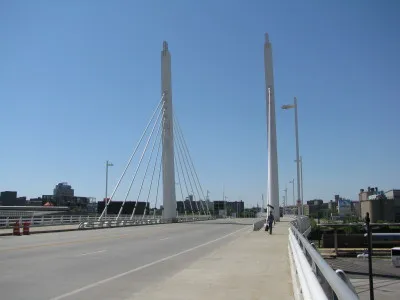
- The double arrangement places pairs of columns on both sides of the deck.
- The portal is similar to the double arrangement but has a third member connecting the tops of the two columns to form a door-like shape or portal. This offers additional strength, especially against traverse loads.
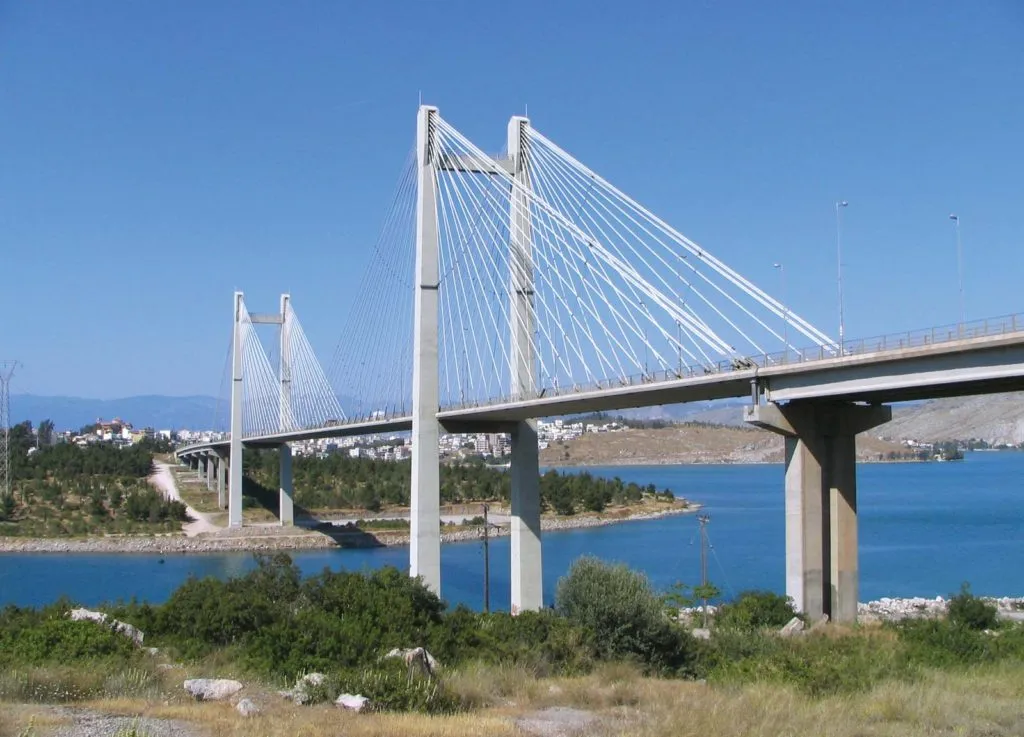
- The A-shaped design is similar in concept to the portal but achieves the same goal by angling the two columns towards each other to meet at the top, eliminating the need for the third member. The inverted Y design combines the A-shaped on the bottom with the single on top.
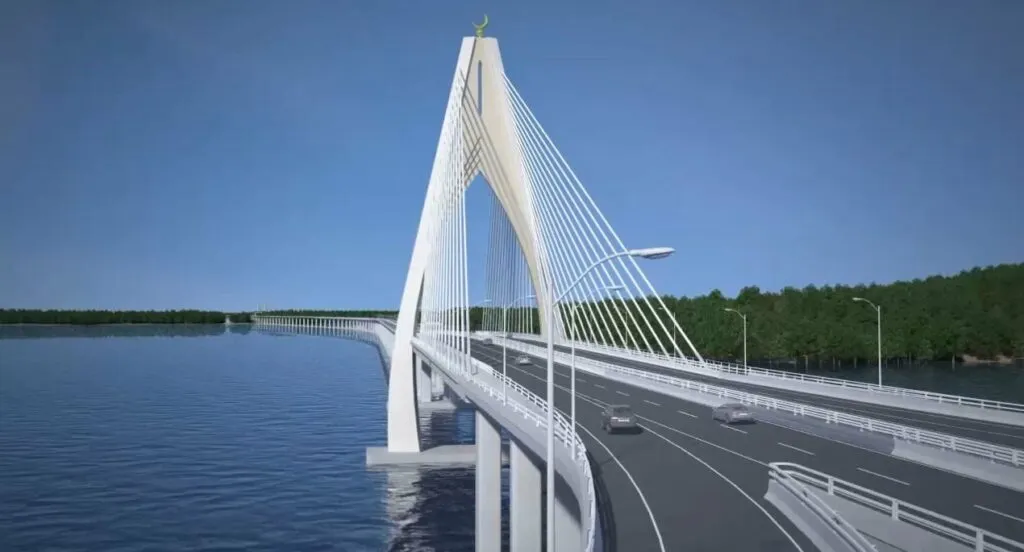
Depending on the design, the columns may be vertical or angled or curved relative to the bridge deck.
Cable-stayed bridge- Selection of cable configuration
- The selection of cable configuration and number of cables is dependent mainly on length of the span, type of loadings, number of roadways lanes, height of towers, and the designer’s individual sense of proportion and aesthetics.
- Cost also plays important role in deciding the selection
- Using less number of cables increases concentrated load at a single point thereby requiring additional reinforcement for the deck slab as well as pylon.
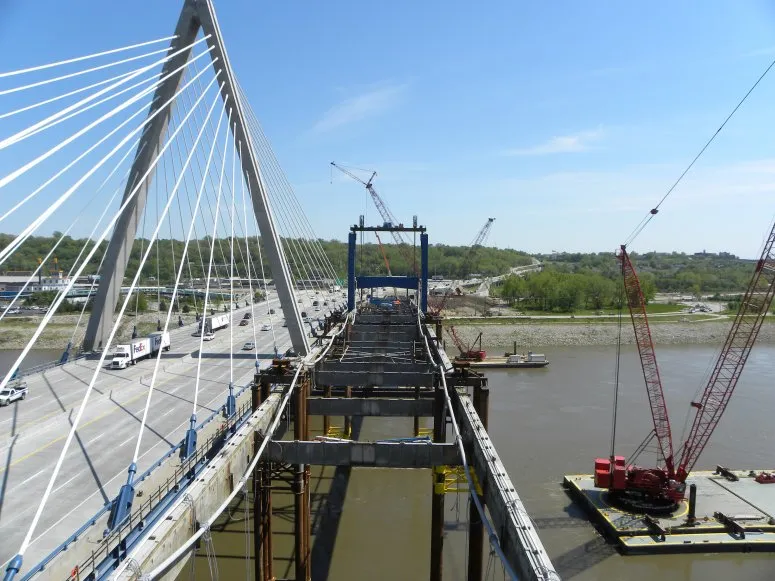
The structural systems can be varied by changing tower shapes and the cable arrangements. The configurations of cable-stayed bridge are stiffening girder, cable system, towers and foundations. The stiffening girder is supported by straight inclined cables which are anchored at the towers. These pylons are placed on the main pier so that the cable force can be transferred down to the foundation system. Three basic cable arrangements are radial system, harp system, fan system. The proposed bridge is double plane fan type long-span cable stayed bridge with A-shaped tower. The role of tower or pylon is also very important in cable-stayed bridges. The towers are the most visible elements of a cable-stayed bridge. The primary function of the pylon is to transmit the force arising from anchoring the stay and these forces will dominate the design of the pylon. Many varied types of the pylon are H frame, A -frame, inverted frame or λ-frame and so on. In this cable-stayed bridge, A-shaped tower is used.
Conclusion
The fabrication and erection of cable-stayed bridges involve major changes in structure configuration through the addition and removal of structure components. In every stage of the construction process, adequate information on the constructed structure is important to determine the real structure situation for the analysis of errors and to verify construction requirements. Cable-stayed bridges are widely constructed all over the world. This type of bridge is very competitive economical for medium and long span. In comparison with other types of bridge, cable-stayed bridges are particularly pleasing to the visual senses. Moreover, this type of bridge fills the gap of efficient span range between conventional girder bridges and the very long span bridges.
Sources- ASCE Library, PCI.org, txdot.gov, Infrastructurepc.com, Ijert.org



